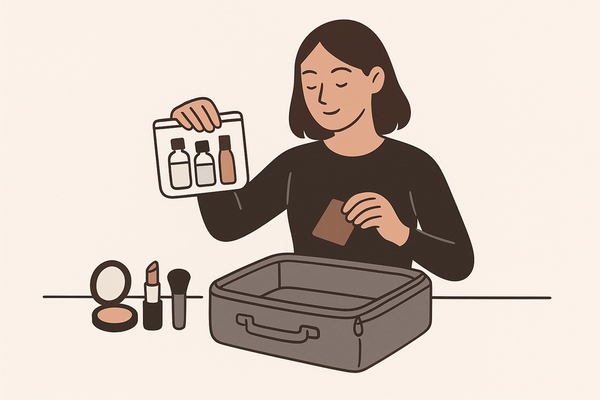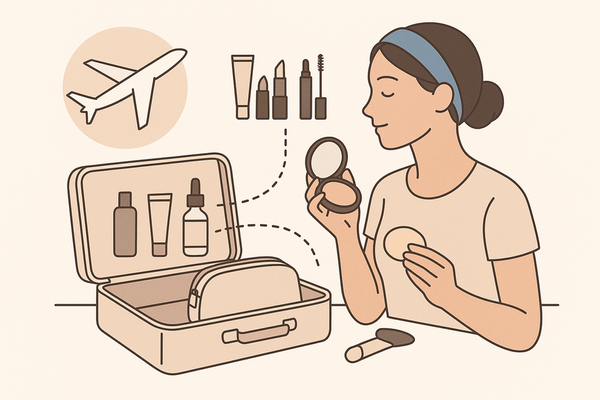Creative Makeup Designs: A Comprehensive Guide to Artistic Expression
Discover the transformative world of creative makeup designs, exploring techniques, history, and trends to unlock your artistic expression.

8 min read
Key Takeaways
- Artistic expression: Creative makeup designs transform the face into narrative-driven wearable art.
- Historical roots: From ancient body paint to social media-driven trends, the evolution spans millennia.
- Categories: Fantasy, avant-garde, SFX, festival, face painting, and minimalist abstract.
- Tools & techniques: Color theory, airbrushing, prosthetics, layering, and precision detailing.
- Current trends: Optical illusions, pop art motifs, UV glow, cultural tributes, and AI-powered previews.
Table of Contents
- Introduction
- Defining Creative Makeup Designs
- Historical Context and Evolution
- Types and Categories of Creative Makeup Designs
- Techniques, Tools, and Materials
- Trends and Inspirations
- Tips for Experimenting with Creative Makeup Designs
- Conclusion
Introduction
Creative makeup designs transform simple cosmetics into bold statements of self-expression. In this guide, we’ll explore what they are, why they matter in beauty and fashion, and how you can start experimenting today. You’ll learn definitions, history, main categories, hands-on techniques, current trends, and practical tips. Let’s dive into the colorful world of narrative-driven, wearable art.
Defining Creative Makeup Designs
Creative makeup designs are a form of artistic expression that transforms the face or body into imaginative, narrative-driven wearable art. Unlike traditional makeup—focused on enhancing or evening out skin—creative looks tell stories and make powerful visual impacts.
- Traditional vs. Creative: subtle contouring and neutrals vs. bold visuals, storytelling, experimental textures.
- Hallmarks: unconventional colors, graphic shapes, 3D elements like rhinestones and lightweight prosthetics, mixed-media additions.
- Applications: high-fashion editorials, avant-garde runway shows, social media communities.
Historical Context and Evolution
The journey of creative makeup designs stretches back thousands of years:
- Prehistoric Paint: ritual body art in ancient tribes
- Egypt & Rome: kohl and ceremonial face paint for gods and pharaohs
- Renaissance & 18th Century: powdered white faces and dramatic rouge in Europe
- Early 20th Century: theatre masks evolve into SFX for film and cabaret
- Mid-1900s: avant-garde pioneers like Schiaparelli’s surreal brows
- Modern Era: social media and digital tools accelerate innovation; for an AI-focused take on designing creative looks, see AI-focused take on designing creative makeup looks.
Cultural Influences: Kabuki theatre, Mexican Day of the Dead sugar skulls, drag culture’s exaggerated contours.
Technological Advances: water-activated paints, airbrushing systems, flexible silicone prosthetics, AR filters, and AI-driven previews.
Types and Categories of Creative Makeup Designs
Main categories include:
- Fantasy: fairies, mermaids, aliens with iridescent scales.
- Avant-Garde: abstract, sculptural runway looks with geometric color blocks.
- Special Effects (SFX): prosthetics, latex and silicone for realistic wounds and character aging.
- Festival/Costume: glitter, face gems, neon tribal stripes for carnivals.
- Artistic Face Painting: pop art dots, wildlife scenes, full-face canvases.
- Minimalist Abstract: bold lines or color blocks for a modern edge.
In my studio, minimalist abstract shapes often frame the eyes, giving models a gallery-ready look.
Techniques, Tools, and Materials
Mastering creative makeup designs means choosing the right methods and gear:
- Techniques: color theory and blending, airbrushing, prosthetic application, layering textures, graphic detailing.
- Tools & Products: shader brushes, detail brushes, sponges, liquid liners, cream and water-activated paints, cosmetic-grade glitters, skin-safe adhesives, setting sprays.
Beginner Process:
- Prep skin: cleanse, moisturize, prime.
- Sketch outlines with a nude pencil.
- Build base colors in thin layers.
- Add lines, shapes, and stencils.
- Attach gems or prosthetics with skin-safe glue.
- Finish with setting spray.
Safety Tips: always patch-test, use cosmetic-grade adhesives, remove gently with oil-based remover.
Trends and Inspirations
Stay ahead with these trends:
- Optical illusions: trompe-l’oeil effects
- Pop art motifs: comic dots and heavy outlines
- Nature-inspired: butterfly wings and leaf patterns
- UV & glow-in-the-dark neon looks
- Heritage tributes: cultural patterns reimagined
Notable artists: Tal Peleg’s surreal shapes on Instagram, Rita Synnøve Sharma’s graphic liner tutorials. Discover AI-driven inspiration in our post AI-driven inspiration.
Tips for Experimenting with Creative Makeup Designs
If you’d like to experiment virtually before picking up a brush, Makeup Check AI provides instant AI-powered previews and product matching.
- Build fundamentals: practice gradients and precision lines.
- Start small: try one new technique per session.
- Use references: tutorials, AI apps, and mood boards.
- Join communities: share work on Reddit, Instagram (#CreativeMakeupDesigns).
- Embrace mistakes: document attempts, review, and tweak.
- Explore learning: Pixiwoo SFX, Glam&Gore, Ellie Thuman, and MasterClass courses.
Conclusion
Creative makeup designs blend beauty, art, and storytelling. We defined these transformative looks, traced their rich history, explored categories, detailed techniques and tools, shared the latest trends, and offered practical tips. Now it’s your turn: pick a design, gather your brushes, and unleash your inner artist. Share your creations with #CreativeMakeupDesigns and keep pushing the boundaries of wearable art.
FAQ
- What are creative makeup designs? They are narrative-driven, wearable art looks that go beyond traditional cosmetics by incorporating bold colors, textures, and 3D elements.
- How do I start learning these techniques? Begin with foundational skills like blending and line work, follow tutorials, practice minimalist designs, and use AI apps for virtual previews.
- Are these designs safe for sensitive skin? Yes—choose cosmetic-grade products, patch-test new materials, and use skin-safe adhesives to protect your skin.




